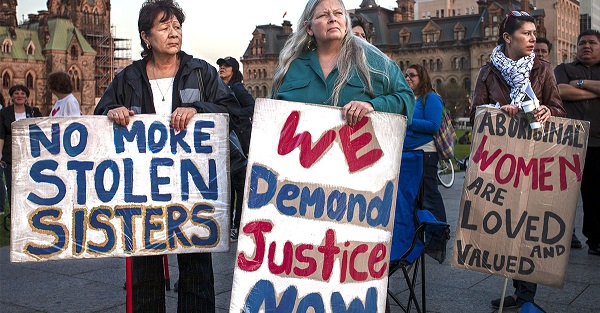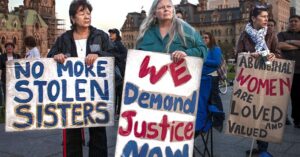Money for bureaucratic apparatus but not for results
TORONTO – I cannot think of a worse nightmare for any parent than to lose their child. What comes close is the discovery that the child may have been, and continues to be, the victim of predation by individuals engaging in human trafficking.
It is a bigger “business” than people are willing to admit. It has human rights abuses, sexual exploitation and international politics associated with it. One need look no further than what has been happening in the Mediterranean basin as an outcome of the ill-fated Arab Spring the Americans used as a cover for upending the “regional governments”.
Many of them now finance their Mercenary- led governments with daily boatloads of poor souls snatched from their villages to be “sold into Europe” where virtually any condition is better than what they left. That is no justification for the “contemporary slave trade”.
It is not a subject that attracts critical scrutiny, nor an analysis of numbers, especially in Canada and particularly in Ontario. Most of the attention falls into the category of “blah, blah and blah, blah”. All governments are guilty, no matter their political hue. An announcement on Tuesday, February 21, by the Ontario Minister of Children, Community and Social Services is a case in point.
Apparently motivated by an urgent and critical set of circumstances (though it is unclear what they may be), the government thought it important to remind the public that it is on guard and vigilant. What follows in italics comes directly from the Government website.
Human trafficking is one of the fastest-growing crimes worldwide. In Ontario, the majority of reported cases involve sexual exploitation, which may also be referred to as sex trafficking. Young women and girls are particularly at risk, though boys, men and people who identify as 2SLGBTQ+ are also targeted.
The average age of recruitment into sex trafficking is 13 years old. That should shock anyone. That suggests elementary school-aged children, and lurking pedophiles.
Over 70% of human trafficking victims identified by police are under the age of 25.
Approximately two-thirds of police-reported human trafficking cases in Canada occur in Ontario. But no definitive numbers for Ontario, which has 40% of the country’s population.
To combat the growing problem of child sexual exploitation in the province, Ontario is investing $307 million from 2020 to 2025 on a new anti-human trafficking strategy. That amounts to about $60 million per year. Ontario’s plan represents the largest total investment in dedicated anti-human trafficking supports and services in Canada. But one would expect that, given the size of Ontario’s population.
Moreover, these Statistics Canada numbers are three years old! But the Minister has a point to make, so her Ministry cites The Final Report of the National Inquiry into Missing and Murdered Indigenous Women and Girls which highlighted that, “while Indigenous women represented only 4% of the Canadian population in 2016, they comprised nearly 50% of victims of human trafficking. Of those, nearly one-quarter were under the age of 18.”
According to Statistics Canada, “between 2009 and 2018, there were approximately 1,400 victims of human trafficking reported to police in Canada”. Based on the above, 700 would have been indigenous, country wide.
Furthermore, not all sex traffickers are adults. School-aged children and youth may also be involved in trafficking their peers, says the Ministry, and 6% of the accused persons identified were between the ages of 12 to 17. Adds the Ministerial website.
To combat the growing problem of child sexual exploitation in the province, even though Ontario has been investing those $307 million from 2020 to 2025 on a “new” anti-human trafficking strategy.
Something is not working: blah blah blah blah.
In the pic above, a demonstration for missing indigenous women (photo from www.amnesty.ca)




